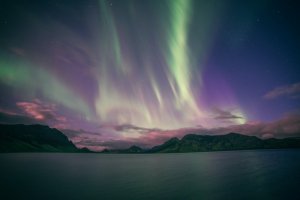
Exploring the Celestial Dance: Annabel Monaghan shares her favorite Northern Lights Displays in Iceland.
Venturing into the land of fire and ice, Iceland is a realm where nature’s most magnificent spectacles come to life. Among these, the Northern Lights, or Aurora Borealis, are perhaps the most enchanting. Reykjavik, Iceland’s capital, serves as the perfect gateway to witness this celestial ballet. For those looking to embark on this awe-inspiring journey, here’s a guide to the five most breathtaking Northern Lights displays you can experience on Reykjavik tours.
The Best Northern Lights Tours: Þingvellir National Park
When it comes to the best Northern Lights tours, Þingvellir National Park is often at the top of the list. Þingvellir National Park, a key location along Iceland’s Golden Circle, is a top destination for Northern Lights tours. This park, steeped in history as the site of Iceland’s first parliament established in 930 A.D., also sits atop the Mid-Atlantic Ridge, dividing the Eurasian and North American tectonic plates. It’s renowned for its clear skies, which provide an ideal backdrop for viewing the Northern Lights, a rare and spectacular phenomenon that can be counted on the fingers of one’s hands each year. The park’s diverse offerings include snorkeling or diving in the Silfra rift, allowing visitors to swim between two continents in crystal-clear waters.
The best time to visit Þingvellir for Northern Lights tours is outside the summer months, as the park is less crowded and the weather is not too cold. April, May, September, and October are recommended for a balance of manageable crowds and favorable weather conditions. It’s advised to be prepared for quick weather changes, with suggestions to carry rain gear and wear layers while exploring the natural beauty of Iceland in this historic and geologically unique park.
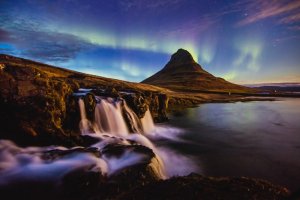
The Mystical Skies of Vik
Vík, Iceland’s southernmost village, is a prime destination for witnessing the Northern Lights. This picturesque village, easily accessible by the Ring Road, is notable for its unique black sand beaches and stunning ocean views, which enhance the experience of observing the Aurora Borealis. The Reynisfjara beach near Vík is particularly ideal for capturing incredible photographs of the Northern Lights, with the black sand and ocean waves adding to the beauty of the moment. The sounds of the ocean amplify the magical experience of watching the Aurora play in the sky.
Vík is part of the Katla Geopark and is surrounded by natural wonders including a volcano and glacier to the north. The Reynisfjara Beach, known for its hexagonal black basalt columns, and the charming, red-roofed Vík í Mýrdal Church, situated on a hill above the village, offer perfect locations for Northern Lights viewing. Visitors can also explore the Dyrhólaey Arch and lighthouse, and consider joining a tour to hike the Sólheimajökull glacier. The mystical skies of Vík, where the Aurora Borealis curtains waft over the Atlantic, create an unforgettable experience for both outdoor and cultural enthusiasts.
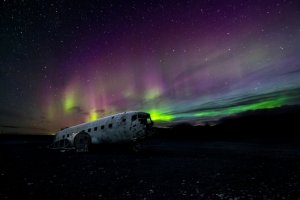
The Serene Ambiance of Lake Kleifarvatn
Lake Kleifarvatn, the largest lake on the Reykjanes Peninsula in southwest Iceland, boasts a serene and intriguing ambiance. Covering an area of 9.1 square kilometers and reaching depths of 97 meters, it’s one of Iceland’s deepest lakes. The lake’s setting is geologically rich, lying on the fissure zone of the Mid-Atlantic Ridge, between the North American and Eurasian tectonic plates, in a region known for its geothermal and geological activity. This unique location has inspired literature, such as Arnaldur Indriðason’s crime-fiction novel “The Draining Lake,” which is set around the lake. Unlike most lakes, Kleifarvatn is not fed by rivers but rather by porous lava rock, contributing to its high fish population and popularity among anglers. Adding to its allure, the lake is now a site for scuba diving tours, offering a rare opportunity to explore the underwater world between two tectonic plates, view hot springs, and feel the bubbles from geothermal activity.
The Aurora Reflections at Jökulsárlón Glacier Lagoon
Jökulsárlón Glacier Lagoon in Iceland, known as “The Crown Jewel of Iceland,” is a prime destination for viewing the Aurora Borealis or Northern Lights. The lagoon, part of the Vatnajökull National Park in southeast Iceland, is characterized by its ever-evolving landscape, filled with floating icebergs from the Breiðamerkurjökull Glacier. These icebergs, ranging in size from small chunks to massive structures, create a dynamic and mesmerizing environment, especially when reflecting the vibrant colors of the Northern Lights. The surrounding mountains add a dramatic backdrop to the spectacle, enhancing the beauty of the auroras.
Visitors seeking to experience the Northern Lights at Jökulsárlón are advised to book guided tours with authorized operators, especially between September and April, the prime viewing period. Experienced guides can lead tourists to the best viewing spots and provide accurate forecasts, increasing the chances of witnessing this natural phenomenon. It’s important to dress warmly in layers and bring waterproof clothing, as temperatures can drop significantly at night. The unique combination of the lagoon’s floating icebergs, wildlife, and natural beauty makes Jökulsárlón an unforgettable destination for viewing the Northern Lights.
The Enchanting Skógafoss Waterfall
Skógafoss, one of Iceland’s most majestic waterfalls, is located in the southern part of the country. This stunning natural wonder, formed where the coastline once met the land, cascades down from cliffs that have remained as the coast receded. The waterfall is 25 meters wide and has a dramatic 60-meter drop, fed by waters from the Eyjafjallajokull and Myrdalsjokull glaciers. The mist from Skógafoss often creates beautiful rainbows, especially on sunny days.
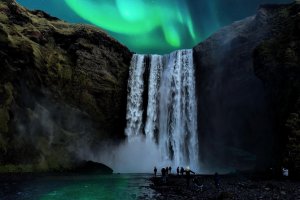
A legend adds to the allure of Skógafoss, suggesting that the area’s first Viking settler buried treasure behind the waterfall. Skógafoss is a popular stop on the Golden Circle Route, known for its photographic opportunities and as a vantage point for the Northern Lights. For hikers, the waterfall is a gateway to notable trails, including a challenging 370-step climb to the top, offering a breathtaking view of Iceland’s southern coastline. Located about two hours’ drive from Reykjavik, Skógafoss is easily accessible from the main ring road, making it a must-visit destination for tourists and nature enthusiasts alike.
Photographing the Northern Lights: Tips and Tricks
- Photographing the Northern Lights, a breathtaking natural phenomenon, requires specific techniques to capture their full splendor. Firstly, a camera capable of manual settings is essential, with a preference for DSLR or mirrorless types. Key settings include a wide aperture (around f/2.8 or lower) to let in as much light as possible, a high ISO setting (starting from 1600 and adjusting as needed), and a longer exposure time (ranging from 5 to 30 seconds) to capture the lights’ movement and brightness.
- A sturdy tripod is crucial to avoid camera shake during long exposures. A remote shutter release can further minimize vibrations. Focusing can be challenging in the dark, so setting the lens to infinity focus or using a distant light source to manually focus before the aurora appears is recommended.
- Understanding the aurora’s behavior and being patient is key. The Northern Lights can be unpredictable, so monitoring aurora forecasts and being ready to adjust settings on the spot is important. Lastly, dressing warmly and being prepared for cold, nighttime conditions is vital for a comfortable and successful photography session.
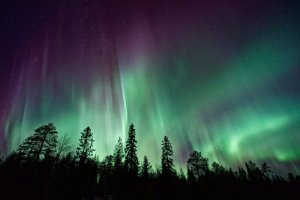
The Best Time to Witness the Northern Lights in Reykjavik
The best time to witness the Northern Lights in Reykjavik is from late September to mid-April, coinciding with the Icelandic winter. During this period, the nights are longest and darkest, providing optimal conditions for viewing the aurora borealis. The equinox months of March and September are particularly favorable, as Reykjavik experiences long winter nights, increasing the chances of witnessing this natural spectacle. However, it’s important to note that the Northern Lights are unpredictable and elusive, making their appearance dependent on several factors.
Visibility is heavily influenced by weather conditions; clear, cloudless skies are essential for a good view. The Northern Lights can appear at any time between sunset and sunrise, but the best time is usually around midnight. It’s also advised to monitor the Northern Lights forecast for predictions on cloud cover and auroral activity. Despite the unpredictability, the winter months provide the best opportunity to experience this magnificent phenomenon in Reykjavik.
Conclusion
A trip to Reykjavik with the aim of witnessing the Northern Lights is more than just a holiday; it’s a pilgrimage into the heart of nature’s most mesmerizing phenomenon. Each location offers a unique perspective and experience of the auroras, from the serene Lake Kleifarvatn to the dramatic Jökulsárlón Glacier Lagoon. Whether you’re a photographer, a nature enthusiast, or someone seeking a once-in-a-lifetime experience, the Northern Lights in Reykjavik promise an unforgettable adventure. So pack your bags, ready your cameras, and prepare to be captivated by the celestial dance of the Aurora Borealis.
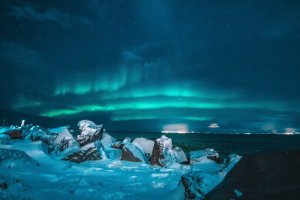
Your thoughts on Northern Lights Displays?
Have you ever ventured north of the Arctic Circle to experience the Northern Lights? If not, is this something you would like to do? Please share your thoughts in the comments below.

Annabel Monaghan
Annabel Monaghan is currently a writer at The Good Men Project and a number of other websites. She is a digital nomad interested in travel and technology. You can see more of her work here: https://goodmenproject.com/author/annabel-monaghan/














Leave a Reply